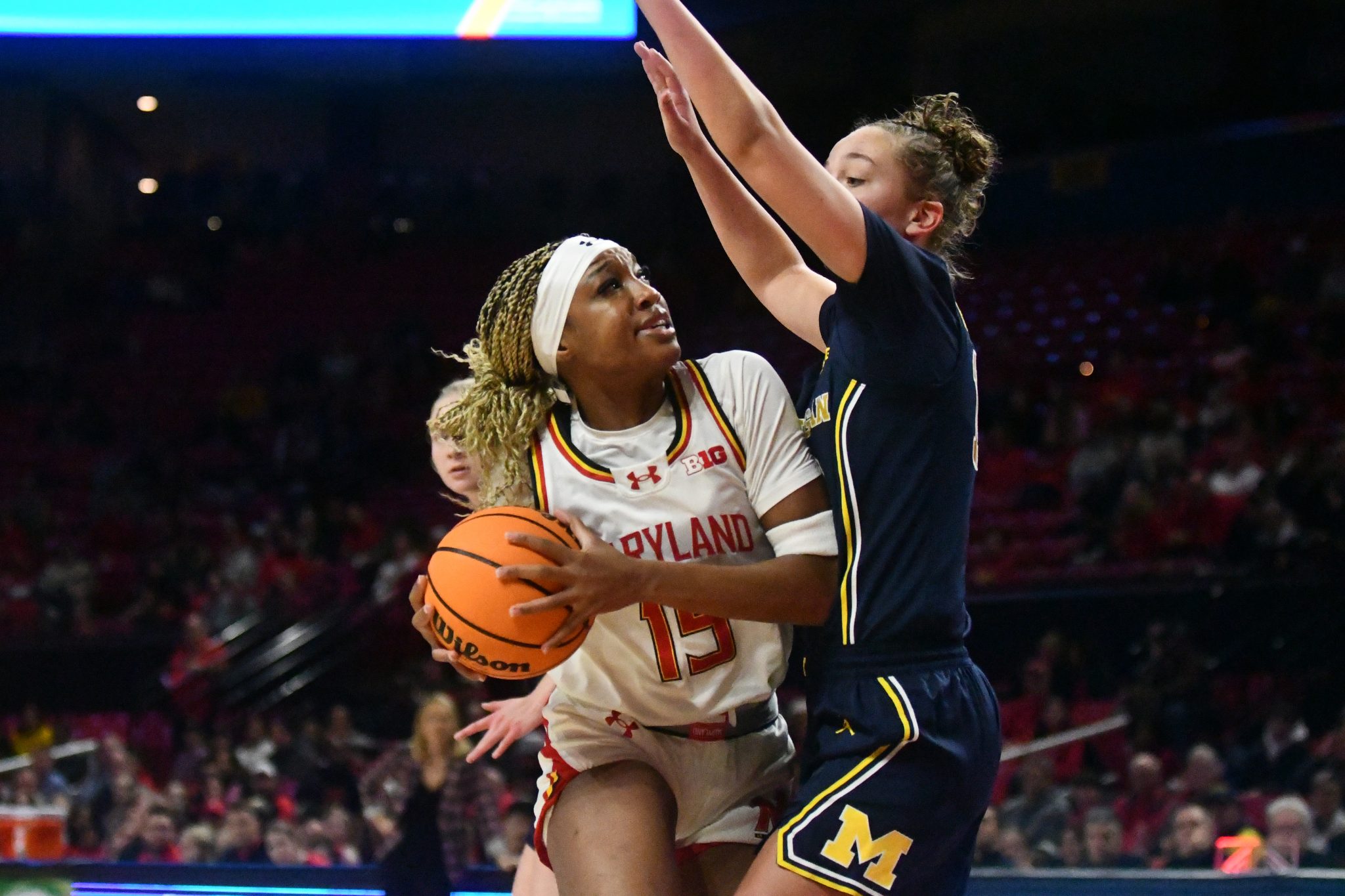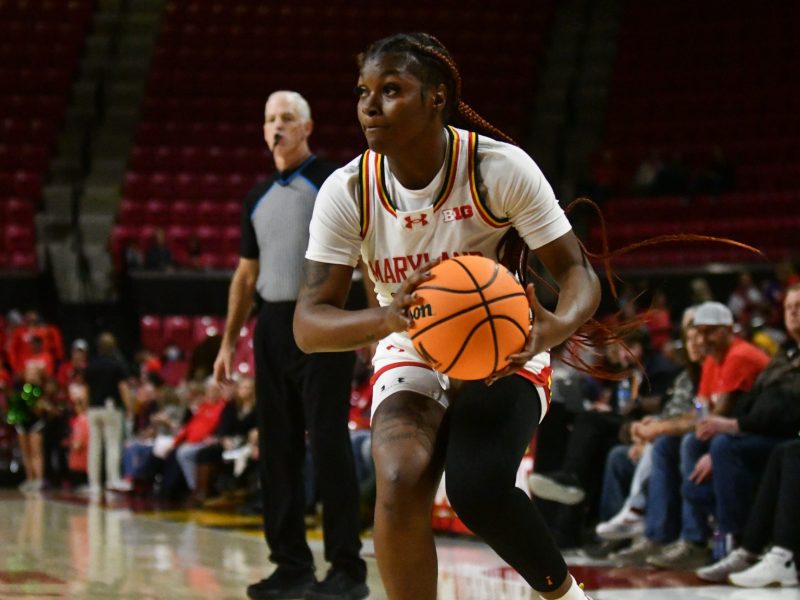Christina Dalce stood at the free throw line on defense. The assignment for the Maryland women’s basketball forward was to stay with Michigan guard Olivia Olson, but that quickly changed.
The Wolverines’ Syla Swords had a clear lane to the hoop, moving past Terps’ guard Saylor Poffenbarger into the paint. A split-second decision from Dalce to collapse on Swords halted the Michigan guard’s dribble drive. She swatted the ball out of play, and Maryland forced a miss seconds later to preserve a win.
The senior had seen that play numerous times before, but on a court that was only one half with four fewer players.
“I feel like I’ve always naturally had that, the ability to be aware of when someone gets beat,” Dalce said. “The time, sense of awareness. I can definitely say 3×3 helped with that.”
Dalce spent last offseason playing for USA Basketball at the FIBA 3×3 Nations League Americas Conference in Mexico City, her second straight summer playing.
The Villanova transfer started 3×3 basketball after Mark Jackson, the former athletic director of the Big East school and member of the 3×3 committee for USA Basketball, was told of a tournament consisting of other collegiate programs, including Maryland.
[Shyanne Sellers exits late in Maryland women’s basketball’s 85-77 win over Michigan]
She traveled to Colorado, where the headquarters of USA Basketball are located, to play against the different schools. That moment, along with the opportunities to play in China, Mongolia, Mexico and other countries, hooked her on 3×3 basketball.
The 3×3 variation is different from the traditional 5×5 played at the college level.
Each team rosters four players, with three on the floor and one used as a substitute. There’s only one basket that both teams score on to create constant competition. After a made basket or a rebound, the new offensive team can play as quickly as they want to.
A reduced 12-second shot clock forces fast pace. Games last until either 10 minutes have elapsed or a team reaches 21 points.
The quickness of 3×3 is the biggest thing Dalce uses to her advantage in the normal basketball setting. It assisted her with her endurance and helped her stay fit during the offseason months.
View this post on Instagram
[Maryland women’s basketball’s frontcourt struggles were exposed against Nebraska]
“The 3v3 is a really high endurance, quick motor skills. You got to be in elite-level shape,” coach Brenda Frese said. “You play on the biggest stage. [Christina] got to play against professionals, a WNBA team this past summer. International competition.”
Dalce’s in-game awareness has even improved in her two years playing. When guard Shyanne Sellers — who paired with Dalce at the 3×3 level in 2023 — runs a pinch action play, Dalce knows exactly what to do. Without hesitation, she can make a backdoor pass if Sellers cuts, or perform a dribble handoff if the senior doesn’t.
But most importantly, 3×3 has helped her stay focused on the court. Dalce can’t dwell on a mistake she makes in 3×3 because she immediately has to switch to offense or defense. She must keep a “clear mind,” something she’s tried to stay consistent with this season.
“People who play 5v5, they can’t play 3×3,” Dalce said. “But people who play 3×3 can play 5v5 because of the pace, the change of pace.”
Dalce has aspirations of continuing to play in the 3×3 landscape after graduation. A new league, Unrivaled, debuted this winter for WNBA players to play 3×3 in the offseason. It’s also a recognized Olympic sport; current TCU graduate student Hailey Van Lith won a bronze medal at the 2024 Olympics.
Dalce’s basketball journey will continue after her time with the Terps. A spot on the 2028 Los Angeles Olympic roster is the step she wants to take.
“That’s the eye on the prize,” Dalce said.



